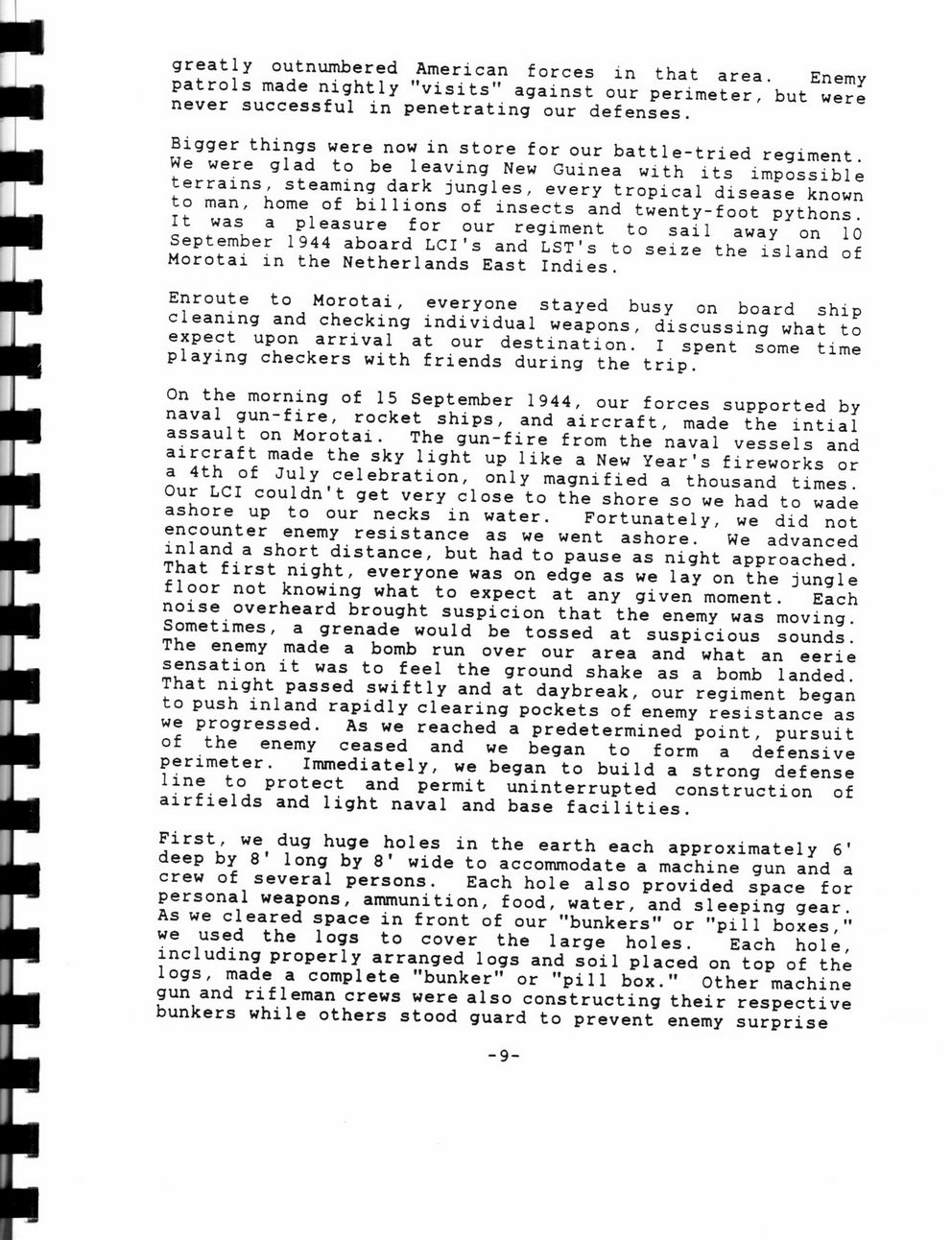This text was obtained via automated optical character recognition.
It has not been edited and may therefore contain several errors.
greatly outnumbered American forces in that area. Enemy patrols made nightly "visits" against our perimeter, but were never successful in penetrating our defenses. Bigger things were now in store for our battle-tried regiment. We were glad to be leaving New Guinea with its impossible terrains, steaming dark jungles, every tropical disease known to man, home of billions of insects and twenty-foot pythons. It was a pleasure for our regiment to sail away on 10 September 1944 aboard LCI's and LST's to seize the island of Morotai in the Netherlands East Indies. Enroute to Morotai, everyone stayed busy on board ship cleaning and checking individual weapons, discussing what to expect upon arrival at our destination. I spent some time playing checkers with friends during the trip. On the morning of 15 September 1944, our forces supported by naval gun-fire, rocket ships, and aircraft, made the intial assault on Morotai. The gun-fire from the naval vessels and aircraft made the sky light up like a New Year's fireworks or a 4th of July celebration, only magnified a thousand times. Our LCI couldn't get very close to the shore so we had to wade ashore up to our necks in water. Fortunately, we did not encounter enemy resistance as we went ashore. We advanced inland a short distance, but had to pause as night approached. That first night, everyone was on edge as we lay on the jungle floor not knowing what to expect at any given moment. Each noise overheard brought suspicion that the enemy was moving. Sometimes, a grenade would be tossed at suspicious sounds. The enemy made a bomb run over our area and what an eerie sensation it was to feel the ground shake as a bomb landed. That night passed swiftly and at daybreak, our regiment began to push inland rapidly clearing pockets of enemy resistance as we progressed. As we reached a predetermined point, pursuit of the enemy ceased and we began to form a defensive perimeter. Immediately, we began to build a strong defense line to protect and permit uninterrupted construction of airfields and light naval and base facilities. First, we dug huge holes in the earth each approximately 6' deep by 8' long by 8' wide to accommodate a machine gun and a crew of several persons. Each hole also provided space for personal weapons, ammunition, food, water, and sleeping gear. As we cleared space in front of our "bunkers" or "pill boxes," we used the logs to cover the large holes. Each hole, including properly arranged logs and soil placed on top of the logs, made a complete "bunker" or "pill box." Other machine gun and rifleman crews were also constructing their respective bunkers while others stood guard to prevent enemy surprise -9-

Nelson From-Mississippi-to-Mindanao-Autobiography-of-Virgil-E-Nelson-part26